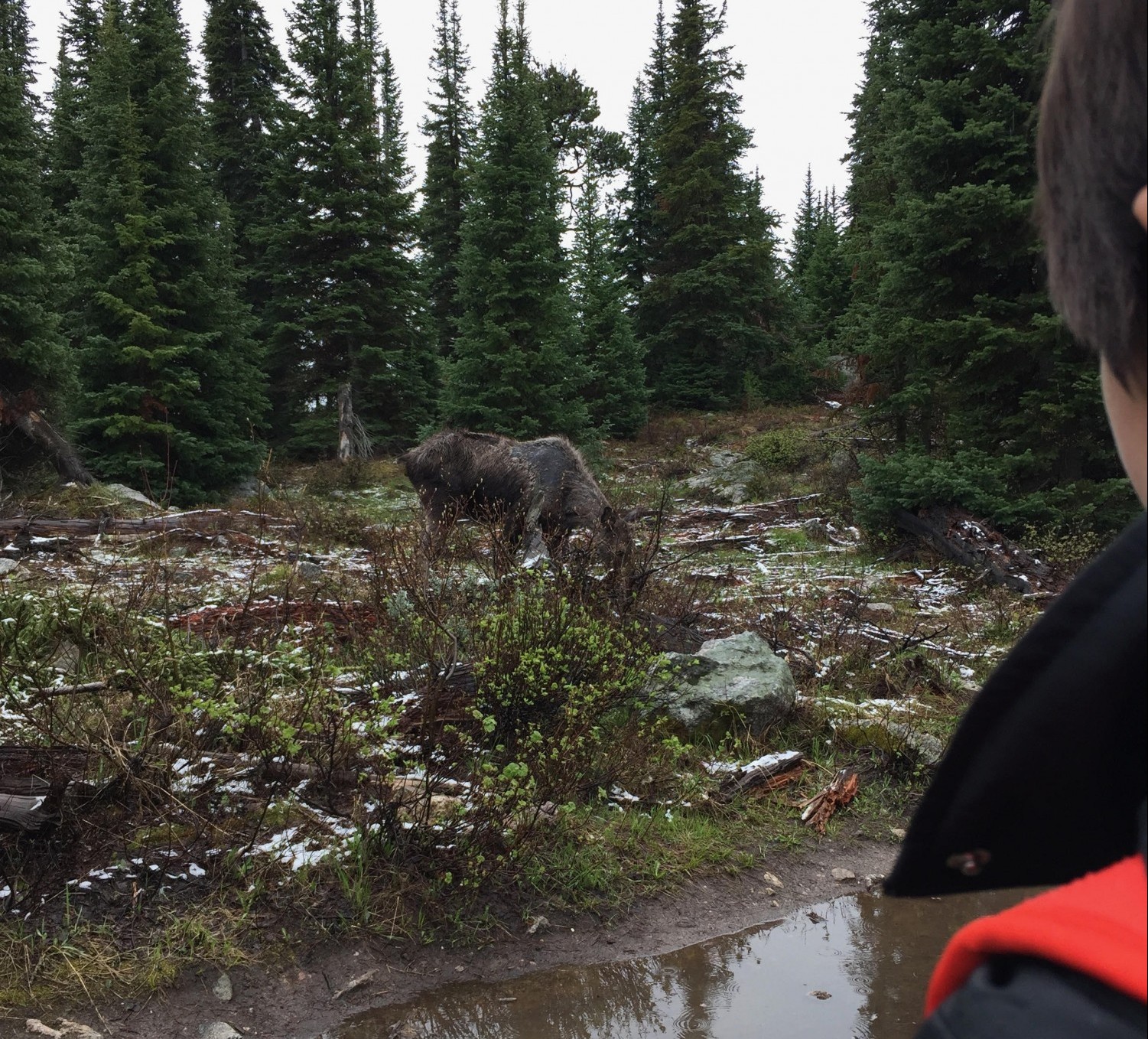Close Encounters of the Natural Kind
While our presence was lost on this foraging female, this mystical moment encouraged me to think about the importance of these protected areas.

C+S 2020 students are blogging about topics that interest them for Applications in Climate and Society, a core spring class.
Warning bears, warning don’t scare bears, seriously folks, these woods have bears. After scrutinizing every sign along the path, my hiking companion (aka my only protection) and I were aware of the bears that call Grand Teton National Park their sanctuary. Knowing that bears should not be scared, I highly encouraged my friend to sing along to Beatles’ tunes as we walked along the narrow, snow-covered path one late spring day in May.
Highly alert for seemingly cute and yet undoubtedly dangerous bears around every corner, we were unprepared to find her in our path. Her being a moose who had wedged herself into a tasty berry bush. There had been so many warning signs for bears and hints about how to defuse that encounter, but we were at a loss for how to handle this unexpected sighting.
In uncharted territory, we both looked at each other exchanging a frenzy of facial expressions that conveyed our mixture of confusion and excitement. Knowing little about the disposition of moose, we skirted around her. The moose hardly acknowledged our timid whispers and tiny footsteps next to her towering body. While our presence was lost on this foraging female, this mystical moment encouraged me to think about the importance of these protected areas.
The moose captivated my attention that day as I thought about humans' actions that she will never understand but, nonetheless, will directly affect her and her habitat. However, we know that in northwestern Wyoming, climate change has tightened its grasp on the Grand Teton National Park, the range where this moose finds sustenance and wanders freely.
As the glaciers melt in the spring and the transition to summer is felt by all flora and fauna, the female moose plunges into lakes searching for food. She doesn’t know the annual average temperature in the park has increased by 1.1 degrees Celsius over the past century, but she can feel the warm rays of the sun burrow into her dark brown coat. Unaware of the fact that fire season in the western U.S. has increased by 105 days since the 1970s, she only recognizes there are parts of the park she no longer visits to search for food.
When the heat subsides and the leaves fall, she doesn’t know why the landscape changes, but she traverses it nonetheless. She sees aspen sprouts all around her, a phoenix of the flora sustained in their roots after a fire. In contrast, lodgepole pines will not survive in her world due to their inability to germinate from their conifer seedlings if fires burn too hot.
As temperatures drop below freezing and roads begin to close, snow falls around her lumbering body. Taking purposeful steps through the white dusted brush, she doesn’t know of the decline in snowpack and shortened winters. A reduction in snowpack leads to a decrease in streams and river flows that provide sustenance in the park, but the moose doesn’t know her water sources could be strained.
She only knows that spring is starting early, and there is fresh grub to snack on. These carbon pollution-driven changes that have far-reaching impacts on the ecosystem in the parks are still being researched. And while a new spring is coloring the stark, snow-covered park, the moose and the park are at risk. Things will only get worse if the world doesn’t take action to cut carbon emissions.
I think about her, the moose of the Grand Teton National Park and how she will never understand these unprecedented changes, inflicted by the same human beings who watch her dance through the seasons. Yet, she will continue to face the consequences. While I know I might not have another chance encounter like this one again, I need to know I am fighting for the possibility of seeing her dance another dance.
